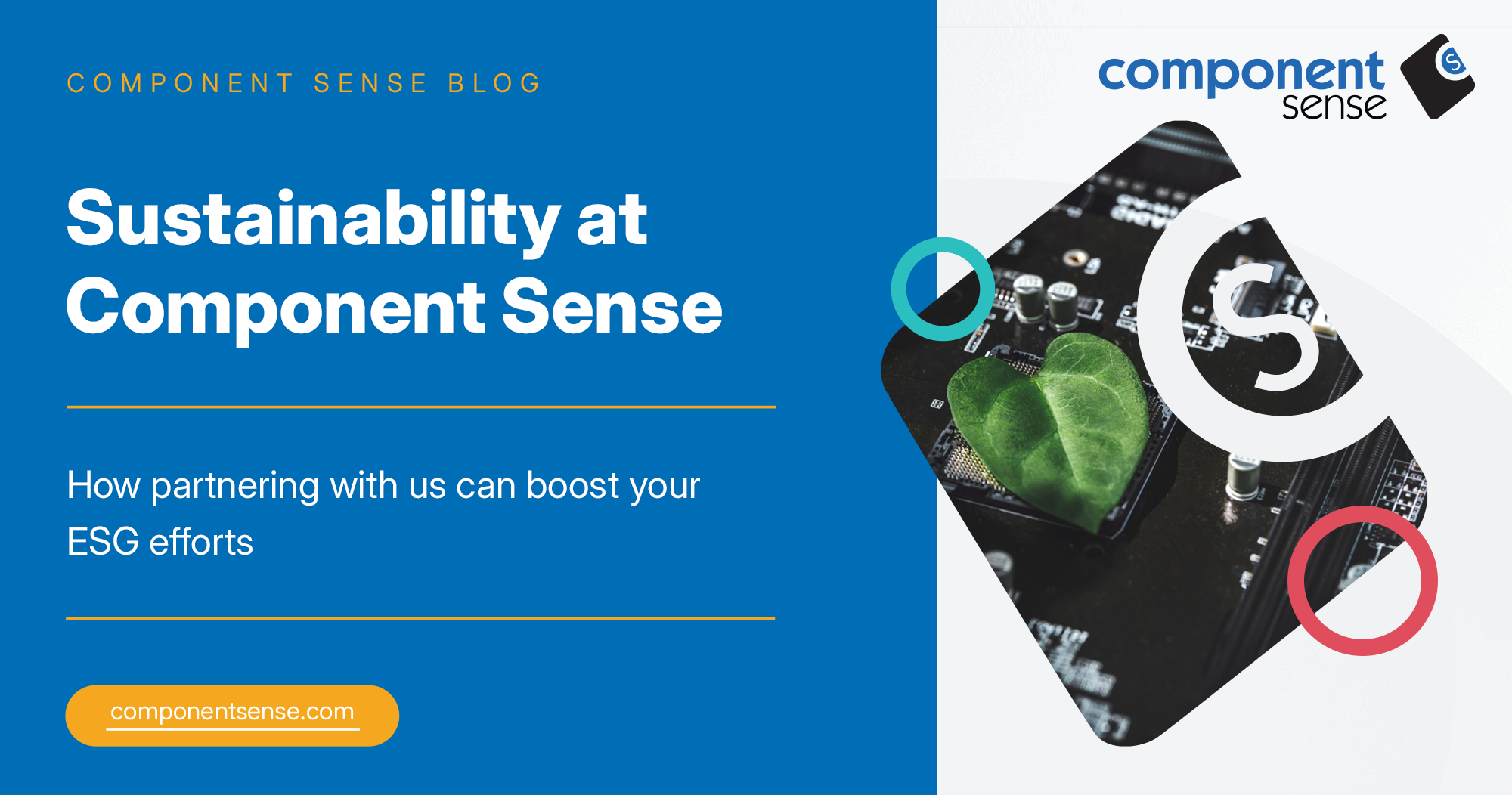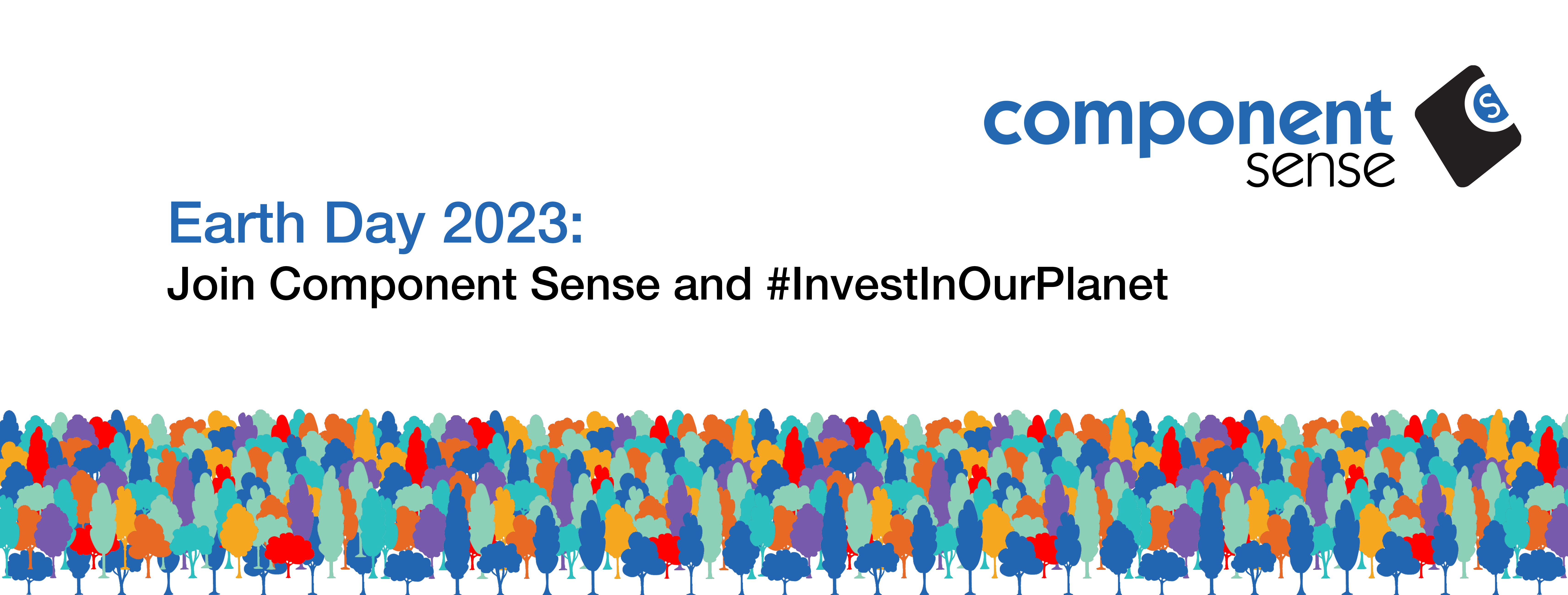Sustainability at Component Sense

Surrounding yourself with the right partners is crucial for business success, especially regarding sustainability.
When businesses embrace sustainability it can help their overall triple bottom line (people, planet, and profit). Here are reasons to work with Component Sense.
Reducing the need for new resource extraction
Rare earth elements (REEs) are crucial for modern electronic components. Reliance on these metals will continue to grow as technology advances, including IoT devices. REEs are finite and require significant energy for extraction, generating large amounts of waste and pollution in the process.
Component Sense’s mission is to provide sustainable excess and obsolete (E&O) solutions for electronic manufacturers. Redistributing E&O component stock prevents it from becoming waste and fosters a circular economy. This, in turn, reduces the demand for new raw materials and lessens the need for unnecessary manufacturing.
Enabling repairs through legacy components
A legacy component is a device or part over ten years old. Component Sense retains these components to facilitate repairs. In many cases, a single chip can repair large industrial or military machinery, preventing it from becoming waste and requiring expensive redesigns.
Access to older, hard-to-find legacy parts can be essential in preventing waste, especially in industries like military and automotive.

Carbon offsetting by planting trees
A mature tree can absorb, on average, 22 lbs of carbon dioxide every year. This is why Component Sense plants not one but two trees for every order with us. This helps offset the carbon emissions of both the supplier and buyer involved in the sale. So far, we have planted over twelve thousand native trees.
At Component Sense, we partner with One Tree Planted to plant trees as part of reforestation and biodiversity projects around the world.
Minimising electronic waste
In 2022 alone, 62 million tonnes of electronic waste (e-waste) were created globally. Only 22% of this e-waste was formally recycled and collected in the same year. This number is on track to rise to 82 million tonnes of e-waste produced by 2030. Reducing e-waste and its harmful effects is one of the core focuses of Component Sense.
Surplus components from overproduction are a significant contributor to e-waste in manufacturing. Redistributing a manufacturer’s E&O to another company prevents this stock from becoming unnecessary e-waste. At Component Sense, we have prevented over 33.5 million components from becoming waste to date.
Partnering with carbon-neutral and carbon-positive shipping companies
Companies in all corners of the globe link together through the global supply chain. Every day, vast amounts of materials are shipped from one country to another. Logistics and shipping, across all industries, contribute significantly to global CO2 emissions.
Component Sense works with shipping companies that either have a positive carbon impact or are net-zero. When you buy from us, you actively reduce the carbon impact of your supply chain and reduce your Scope 3 emissions.

Promoting circularity by extending component lifespans
Original component manufacturers often provide conservative shelf life estimates, assuming improper storage. However, if stock is looked after and handled correctly, components can far outlive cautious estimates, including well beyond the two-year use-by date required for some industries.
Extending the lifespan of components is crucial to minimising e-waste, especially in industries with long production timelines. Some legacy stock at Component Sense is over 20 years old and remains in excellent condition. Practices we employ to extend the shelf life of stock include a humidity and temperature-controlled environment, MSL packaging, and anti-static measures.
Opting for eco-friendly and recyclable packaging materials
The movement against single-use plastics has grown in recent years, and the electronics sector should follow suit. Component Sense uses biodegradable and recycled packaging for shipping components. This packaging protects reels and trays effectively while having a much smaller environmental footprint.
Reducing the need for new component manufacturing
Component manufacturing has a significant environmental impact. Fabs (fabrication facilities) require large amounts of ultrapure water to operate. Additionally, these plants generally require high amounts of energy, which also causes greenhouse gas emissions.
By promoting a circular supply chain, surplus components are reused, reducing the demand for new chips. Component Sense has an extensive network of electronic manufacturers and brokers to give all E&O inventory the best chance of finding a new home and purpose.

Partner with Component Sense
Companies are increasingly assessing suppliers and partners to ensure their sustainability goals align. Beyond Scope 3 emissions, the origin of the parts purchased and whether they promote a circular economy are equally important—in fact, it is estimated that up to 80% of a company’s carbon emissions come from its supply chain.
Component Sense is proud to help electronic manufacturers operate more sustainably and prevent e-waste. We offer three core redistribution models to keep your E&O stock out of landfills while generating returns. Talk to us today about which option is best suited to your operations.
Related Articles
Earth Day 2023: Join Component Sense and #InvestInOurPlanet
Are you concerned about the climate crisis?
From Silicon Valley to Agbogbloshie: The Impact of Our E-Waste
Silicon Valley. The “Tech Mecca”. Home to America’s first trillion-dollar company, Apple.
